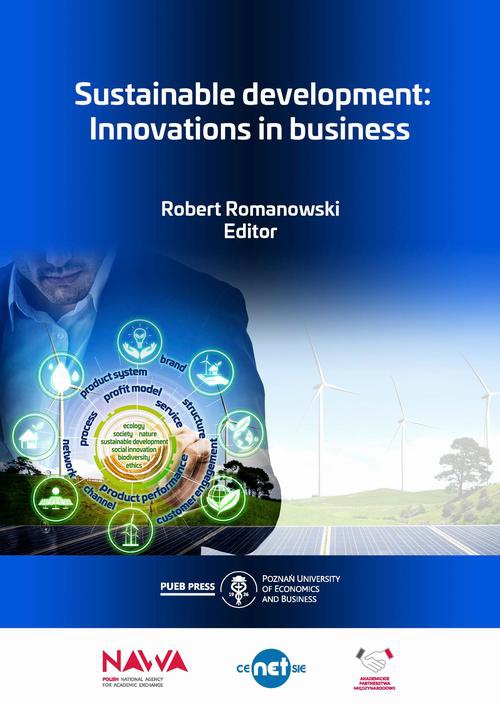Odkładaj książki na swojej półce
×Dostosuj tekst do każdego urządzenia
Twórz notatki
Rozpocznij czytanie tam, gdzie ostatnio skończyłeś
PAMIĘTAJ!
Twój PIN do zasobów w:
Wygasa: dzisiaj
Aby zdobyć nowy PIN, skontaktuj się z Twoją biblioteką.
Zaakceptuj Regulamin, aby kontynuować korzystanie z serwisu.
Zmiana hasła
×Uwaga

Hej, czy wciąż tam jesteś?
Zauważyliśmy Twój dłuższy brak aktywności.
Sustainable development: Innovations in business
Innovation and sustainable development have become buzzwords in the 21st century with the idea of creative destruction launched by Joseph Alois Schumpeter being the base for evolutionary economics. However, new institutional economics helps to understand the necessity of support provided to entrepreneurs and innovators by science and administration to reduce the risk of launching the said innovations. This e-book is devoted to selected types of innovation. Every type of innovation is described with the use of theoretical background and is enriched by adequate case study. Traditional division into four types of innovation, proposed by J.A. Schumpeter (1934), containing product, process, organizational and marketing innovations, was widely accepted, including European Union institutions (OECD/Eurostat, 2008). The concept of innovation has long been dominated by a technical approach to the innovation process, despite the economic arguments exposed by one of the precursors of the theory of innovation and, at the same time, the school of evolutionary economics—Joseph Alois Schumpeter. Frequently, in the context of innovation, it is indicated that organizational and marketing aspects play a part in the successful introduction of innovation onto the market. The structure of the book is based on the typology proposed by Keeley, Walters, Pikkel and Quinn (2013), which focuses on the economic character of innovations. Ten types of innovation are directly related to Schumpeter’s and Oslo Manual classification. A new set of innovations emphasize the economic side of innovation process. The technical novelties are to support new configuration, offering or customers’ experience. This new approach is based on presumptions coming from design thinking idea, leading to user—driven innovation and on cooperation with institutions and entities supporting innovation process. The chapters are devoted to every type of innovation, grouped into three major parts: innovations based on configuration, offering and experience. In the book, configuration includes types of innovations focused on innermost workings of an enterprise and its business system. Offering part contains the types of innovations, that are focused on an enterprise’s core product (good or service), or a collection of its products. The last part, dedicated to innovations based on experience, is focused on more customer-facing elements of an enterprise and its business system.






